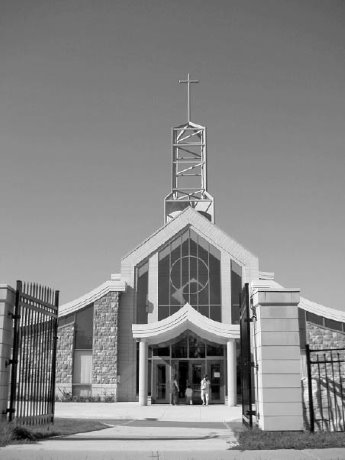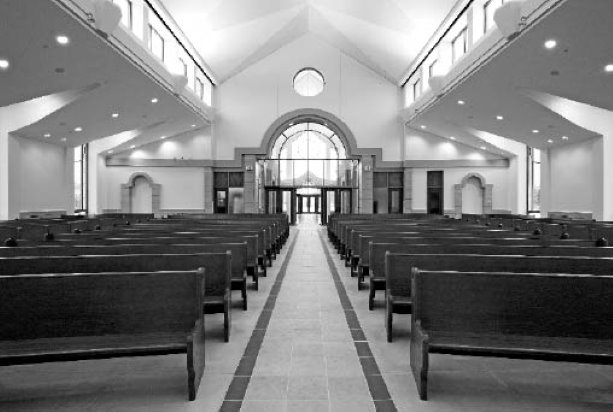The Toronto architectural firm’s mandate for the Saviour of the World Chinese Catholic Mission was for a traditional Catholic church augmented with elements of Chinese architectural form.
Architecture
Young Wright Architects hired to reflect both Catholic traditions and Chinese culture in a 23,000 sq. foot, $5 million Mississauga church
Staff Writer
MISSISSAUGA
Four years ago, Mississauga’s Catholic Chinese community approached Young Wright Architects Inc. with an assignment to design a church that would express the congregation’s ethnicity.
The Toronto architectural firm’s mandate for the Saviour of the World Chinese Catholic Mission was for a traditional Catholic church augmented with elements of Chinese architectural form.
“Saviour of the World is not grandiose,” says architect Andrew Baczynski, project director for the church and head of Young Wright’s 12-person sacred architecture studio.
“But it highlights the Chinese Catholic ethnic group in Mississauga in such a way that the church blends into the Mississauga urban fabric while being easily recognized and appreciated as part of the streetscape.”
The 23,000-square-foot, $5-million project, which faces onto Hurontario Street, was completed in the fall of 2004 by Melloul-Blamey Construction Inc. It is one of several recent and ongoing church-related projects by Young Wright, which boasts the only dedicated sacred-architecture studio among major Canadian architectural firms.
To address the client’s wish for a traditional building vocabulary, the architects based the plan on the ancient prototype of the Roman and early Christian basilica, an oblong building with long double colonnades dividing the interior lengthwise into a central nave flanked by side aisles.
Young Wright transformed the basilica model into a modern, open-concept design. By day, the interior is flooded with natural light. At night, the church glows like a beacon, animating one of the busiest streets in the city.
“Saviour of the World sits in front of a big high school and beside a gas station, but because the church’s architectural language is so distinctive, there’s no confusion, when you see it, that this is a church,” says Baczynski, an associate in the firm.
Nor, with the monumental curved roof walls evoking Chinese architecture, is there any confusion that this is a Chinese Catholic church.
Such clarity exemplifies Baczynski‘s insistence on finding the appropriate architectural language for each church commission.
Many contemporary churches, by comparison, take their design stimulus from the Modernist concept of universal spaces, says Baczynski, who joined Young Wright in 1998.
“Those churches use the same architectural language as shopping malls, swimming pools, libraries, museums and what have you,” he says.
“When that happens, only the big cross in front reassures you that the building is indeed a church.”
The building was constructed on a tight site adjacent to a school. Because of site limitations, the social components of the church, including the parish hall, are located in the split-level basement.
The main floor layout is simple and symmetrical and takes worshippers along a sacred axis leading from an entry expressed in Chinese form through a narthex or ceremonial antechamber delineated by substantial stone pillars.
The nave area with fan-shaped seating allows for good sightlines. The space between the main entry and the sanctuary — the rear portion of the nave containing the altar — is open and divided by a large glass screen that permits visitors to see the altar from the building entry.
The traditional character of the structure has been further emphasized by stone details in a range of textures, including the monumental Chinese curved roof walls in precast concrete.
The masonry penetrates into the church interior and rests on a coloured concrete floor that simulates the slate stone cladding of old cathedrals.












Recent Comments
comments for this post are closed